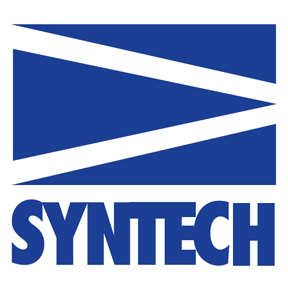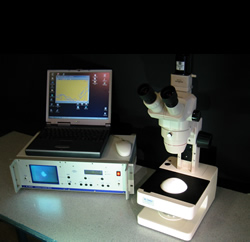The SYNTECH ServoSphere is functionally similar to the locomotion compensator for insects first constructed and described by Kramer (1976). As the Kramer Bowl the SYNTECH ServoSphere also consists of a sphere, on top of which the insect is placed, and which is rotated opposite to the insect’s displacements by means of two electric motors. The motors are driven by electrical commands proportional to the displacement of the insect measured by an optical detector located above the insect. Two encoders orthogonally contacting the sphere transmit the rotational movements to a computer, where the displacements are stored as incremental X and Y coordinates. It is proven that such a device could be very useful and can be used in a wide range of orientation experiments (Kramer, 1976, Weber et al.,1981;Tobin and Bell,1986) and allows manipulation of the insect’s environment over long periods and in an unlimited virtual area. Although the method of the original Kramer-Bowl is straightforward and very attractive as a research tool it is not widely applied because of the complicated construction, difficult operation, and high cost. Moreover, there is a risk for contamination of the sphere surface when using high concentrations and sensitive insects. But the biggest drawback is the need of a tiny reflector that has to be applied onto the back of the insect for the displacement sensor to work properly.
The design of the SYNTECH ServoSphere aims to overcome several of these weaknesses of the conventional „Kramer-Bowl“:
- The size of the sphere in the actual versions is 100, 300 and 700 mm resulting in a light and compact construction. Larger versions can be realized very easy up to a maximum diameter of 2.7 meter.
- The 100 and 300 mm sphere is supported by an aerostatic spherical bearing, which is noiseless and easy to clean.
- The displacement detector is based on a CMOS video sensor followed by a digital signal processor eliminating the need for a reflector on the insect.
- Only two parameters in the feedback loop between detector and motor drives need to be adjusted by the operator: 1. Feedback gain, and 2. Time Constant of the feedback response.
- A real-time video display facilitates focusing the displacement sensor and proper adjustment of the illumination (Infrared and visible).
- Detection of the animal is based on contrast against the uniform colour of the sphere; therefore, application of a reflector on the back of the animal is not needed.
- Operation of the system is facilitated by the video display in the control software.
Actually the SYNTECH ServoSphere comes in three different sizes, with 100mm, 300mm or 700 mm diameter of the sphere.
Locomotion Compensation LC-100
No longer manufactured.
This ‚mini‘ ServoSphere is especially designed for the observation and tracking of small to very small organisms like ticks, mites, aphids, etc. ranging from 0.05 – 1 mm.
Locomotion Compensation LC-300



